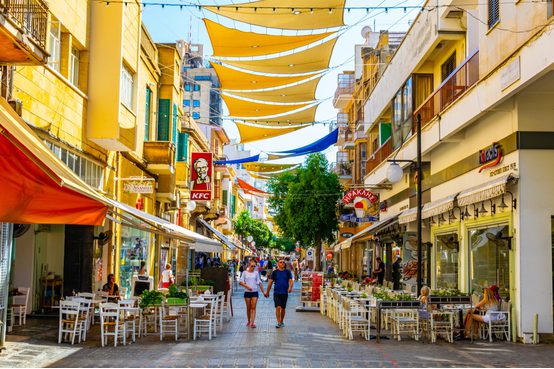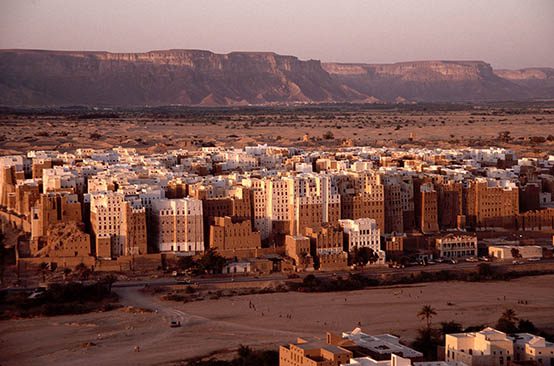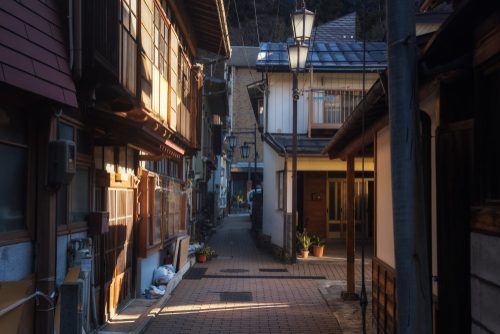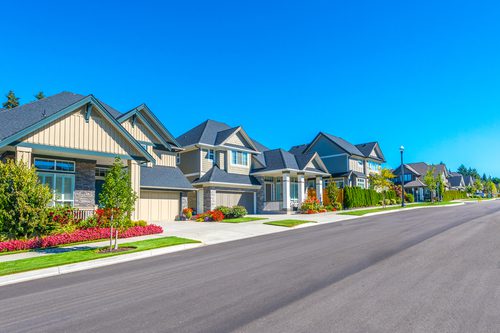A Plea For Shade

The July 4 heat waves that swept much of the U.S. might have had you wondering how people ever lived without air conditioning. For others, the frigid air that flooded offices and homes in response served as a reminder of our overuse of air-conditioning. Online, the annual battle royale over the use of air-conditioning has rekindled and the debate has fallen along familiar partisan lines. With new calls for a ban on air conditioning, things are heating up.
After all, it’s an important question. How—and to what extent—should we keep our buildings and cities cool in a world that’s getting hotter? With the world’s rising temperatures, a growing dependence on air-conditioning alone doesn’t seem especially sustainable. But before we rush to ban AC, we ought to first consider legalizing shade in our cities.
In a way, shade is nature’s air-conditioner. In the shadow of a leafy tree or a tall building, temperatures can fall by as much as 20 degrees. For walkers and bicyclists, this drop can make even the hottest city pleasant. Indoors, a shadow cast over an exposed window could help to mediate temperatures indoors—lessening the need for artificial cooling.
Sadly, shade is becoming increasingly sparse. Outside of a few legacy cities, we increasingly allow the midday sun to beam directly onto the windows of homes and offices and leave public spaces like sidewalks and bus stops totally exposed to the elements.

It wasn’t always this way. Cities used to be designed from the bottom up to tame extreme temperatures, especially in warmer regions. In Yemen’s Old Walled City of Shibam, the “Manhattan of the Desert” combines narrow streets with tall buildings to trap cool air. Similar design elements shape modern cities in warm regions, such as Shenzhen, China, where extreme heat drives demand for units inside “handshake buildings,” densely-packed apartment buildings designed to shield windows and public spaces from the sun.
Closer to home, vernacular architecture in the U.S. was often designed around natural climate control. In the humid Southeast, large windows and central corridors encouraged airflow. In the arid Southwest, thick facades and small windows kept cool air inside. In both cases, most houses were packed tightly together to cast shadows over streets, with awnings, balconies, and roof overhangs used to protect indoor spaces from direct sunlight.
These design elements survive and thrive in cities built before air conditioning, like New Orleans, but are conspicuously absent from most modern Sun Belt metros. With houses sitting squat and far back from the street, and most commercial spaces sitting behind a veritable desert of parking, shade in cities like Phoenix and Atlanta is few and far between.
In these cities today, people generally drive everywhere—and they usually say the heat is the reason. But causation may work in reverse: if the urban design makes it so needlessly uncomfortable to walk or ride a bicycle, is an air-conditioned car really a choice?
The irony here is that the cities that most need shade are the least likely to have it, leaving more and more Americans dependent on air-conditioning to stay cool. Older, urban cities with mild summers—think Boston—have shade in spades, while our newer Sun Belt cities —think Las Vegas—have virtually no shade at all, resulting in an unhealthy dependence on air conditioning.
Why did this happen? A big reason is the way we started planning cities in the twentieth century. Beginning in the 1910s, planners declared a war on shade as a means of responding to slum conditions and high-rises. As described by researcher Sonia Hirt, early land-use planners were inspired by the vision of the detached single-family house on a large lot—a development pattern that’s fine for cloudy Massachusetts, but spells trouble for sunny Florida. Assuming no shade as the ideal, the framers of modern zoning set out to design a system of regulations that make many naturally cooling design elements practically illegal.


Despite rising temperatures and a shift to warmer climates, these rules live on in the majority of cities today. In most suburbs, for example, houses are legally prevented from sitting close to the lot line by setbacks, which prevent any shade from being cast on sidewalks or neighboring homes.
Strict rules surrounding building heights and density cap most suburban buildings at a standard height of 35 feet, well below what could potentially cast a cooling shadow. And shadows from high-rises are treated as an unambiguous evil in planning hearings, even in otherwise dense urban environments like San Francisco.
The criminalization of shade goes beyond land-use regulations; it extends to the way we design public spaces. Despite more and more cities encouraging street trees as a valuable source of shade, many state transportation offices continue to ban them, privileging ease of maintenance over outdoor comfort. Down in Celebration, Florida—Disney’s new urbanist town—an overzealous deputy fire chief recently tried to have all the trees along the town’s main corridor removed in a strained appeal to fire safety.
The nebulous nature of the distance between private and public space makes solving this issue even trickier. Traditional cooling features like awnings and balconies, which may partly cover public spaces from private buildings, are often subject to strict permitting and raucous public hearings. In Chicago, the installation of an awning can require city council approval, entailing months-long processes and thousands of dollars in compliance costs. Rules like these are common across the country, rarely proportionate to the real risks of adding a little shade to the street.
Shade, like air-conditioning, is complicated. The ideal amount of shade will always vary—from city to city, month to month, person to person. But if there’s any room for agreement in the ongoing air-conditioning wars, it’s clear that we need to find ways to stay cool and provide for human comfort—without destroying the environment. There’s room for common ground on the natural cooling offered by shade. We would do well to return to allowing it to play a role in designing our buildings and cities. Or maybe we’re just doomed to fight out the same air-conditioning battles over Twitter and office water coolers, until the sun flames out altogether.
Nolan Gray is a city planner in New York, senior contributor to Young Voices, and regular contributor to Market Urbanism.
Comments